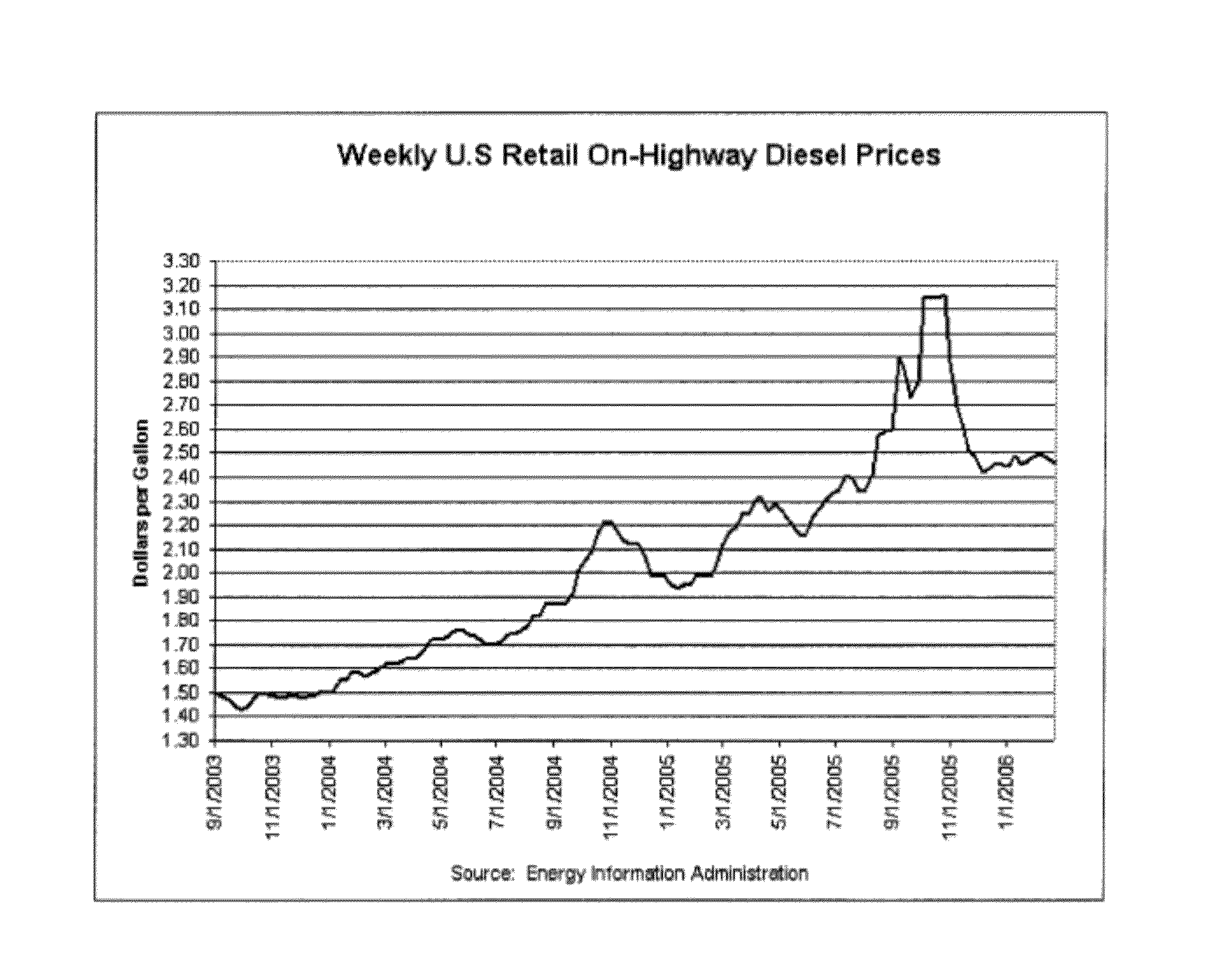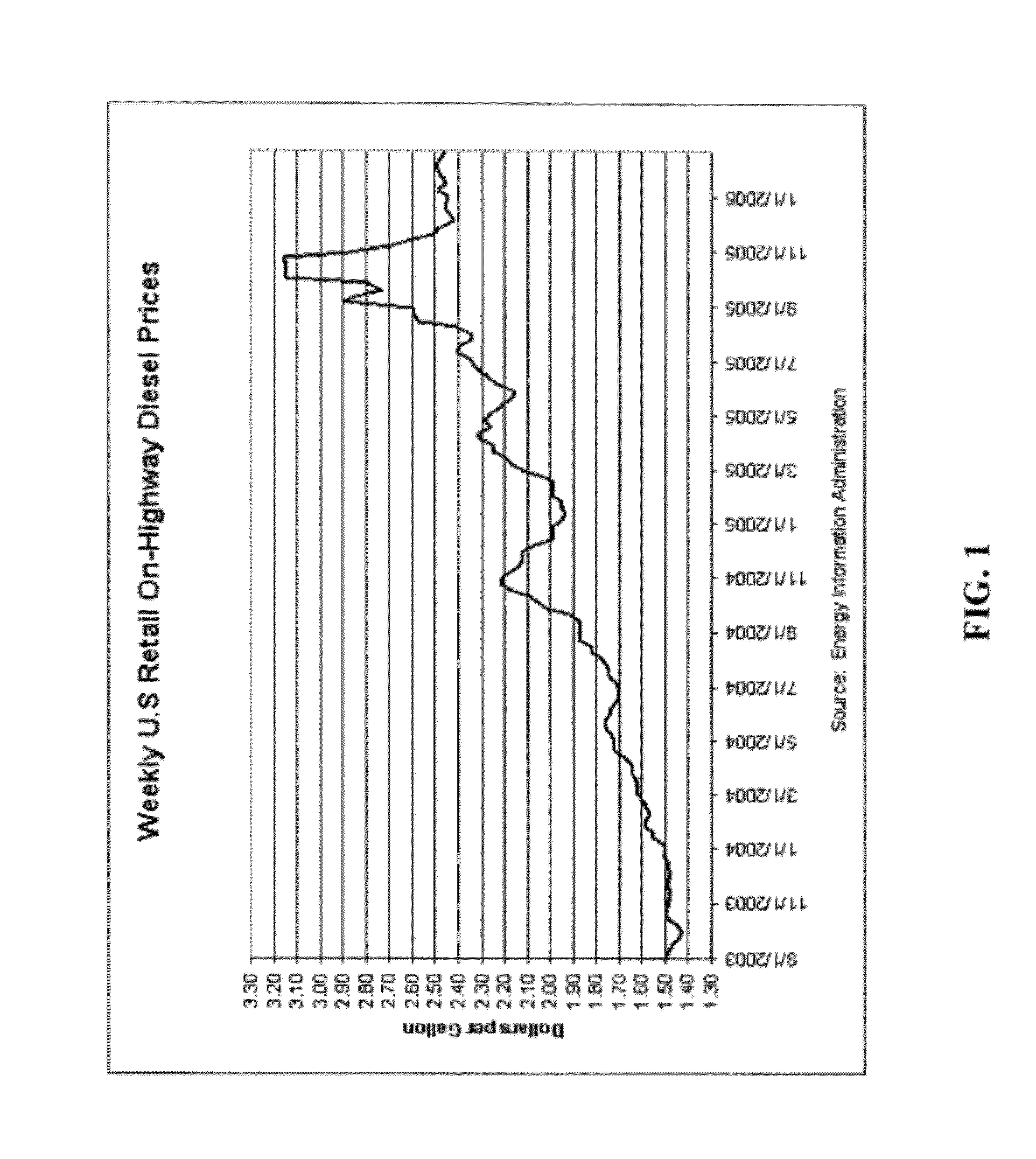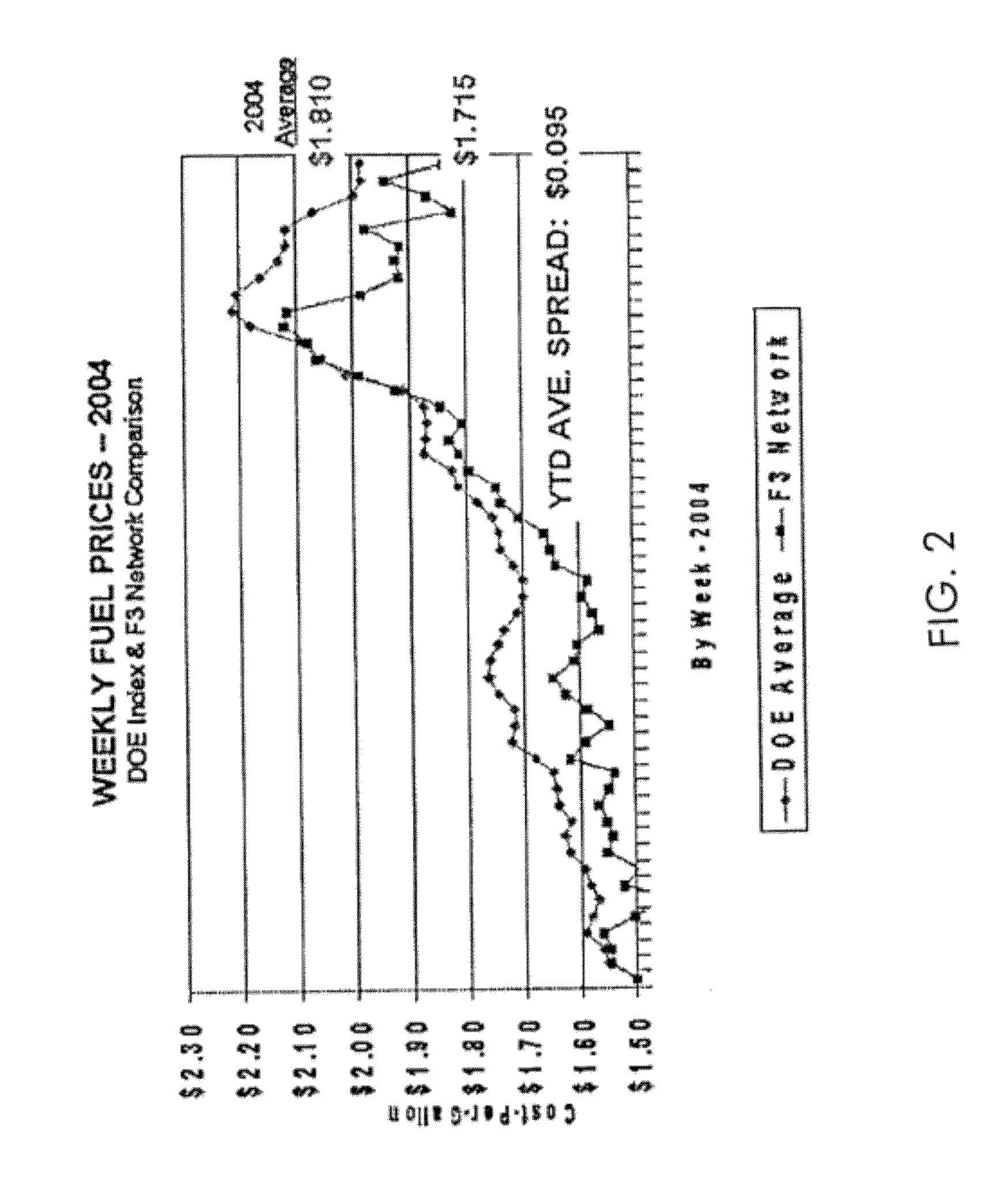Method for shippers to manage fuel costs
- Summary
- Abstract
- Description
- Claims
- Application Information
AI Technical Summary
Benefits of technology
Problems solved by technology
Method used
Image
Examples
Embodiment Construction
[0047]The following terms are explicitly defined as follows. All other terms not given an explicit meaning herein are to be given their conventional and accepted definition in the transportation industry.
[0048]The terms “carrier” or “common carrier” are synonymous and refer to a transporter (i.e., a company or an individual) that holds itself out to the general public for the transportation of goods over a definite route and according to a regular schedule. Thus, a “carrier” is any company or individual who transports the goods of another for a fee. The term “carrier” explicitly encompasses, without limitation, transporters moving goods by any means (land-based vehicles, water-based vehicle, aircraft, and spacecraft, all without limitation), and through any terrain (land, water, air, space). “Carrier” includes, without limitation, local, regional, national, and international transporters. (The term “common carrier” is something of a holdover from the common law. At common law, a com...
PUM
 Login to View More
Login to View More Abstract
Description
Claims
Application Information
 Login to View More
Login to View More - R&D Engineer
- R&D Manager
- IP Professional
- Industry Leading Data Capabilities
- Powerful AI technology
- Patent DNA Extraction
Browse by: Latest US Patents, China's latest patents, Technical Efficacy Thesaurus, Application Domain, Technology Topic, Popular Technical Reports.
© 2024 PatSnap. All rights reserved.Legal|Privacy policy|Modern Slavery Act Transparency Statement|Sitemap|About US| Contact US: help@patsnap.com










